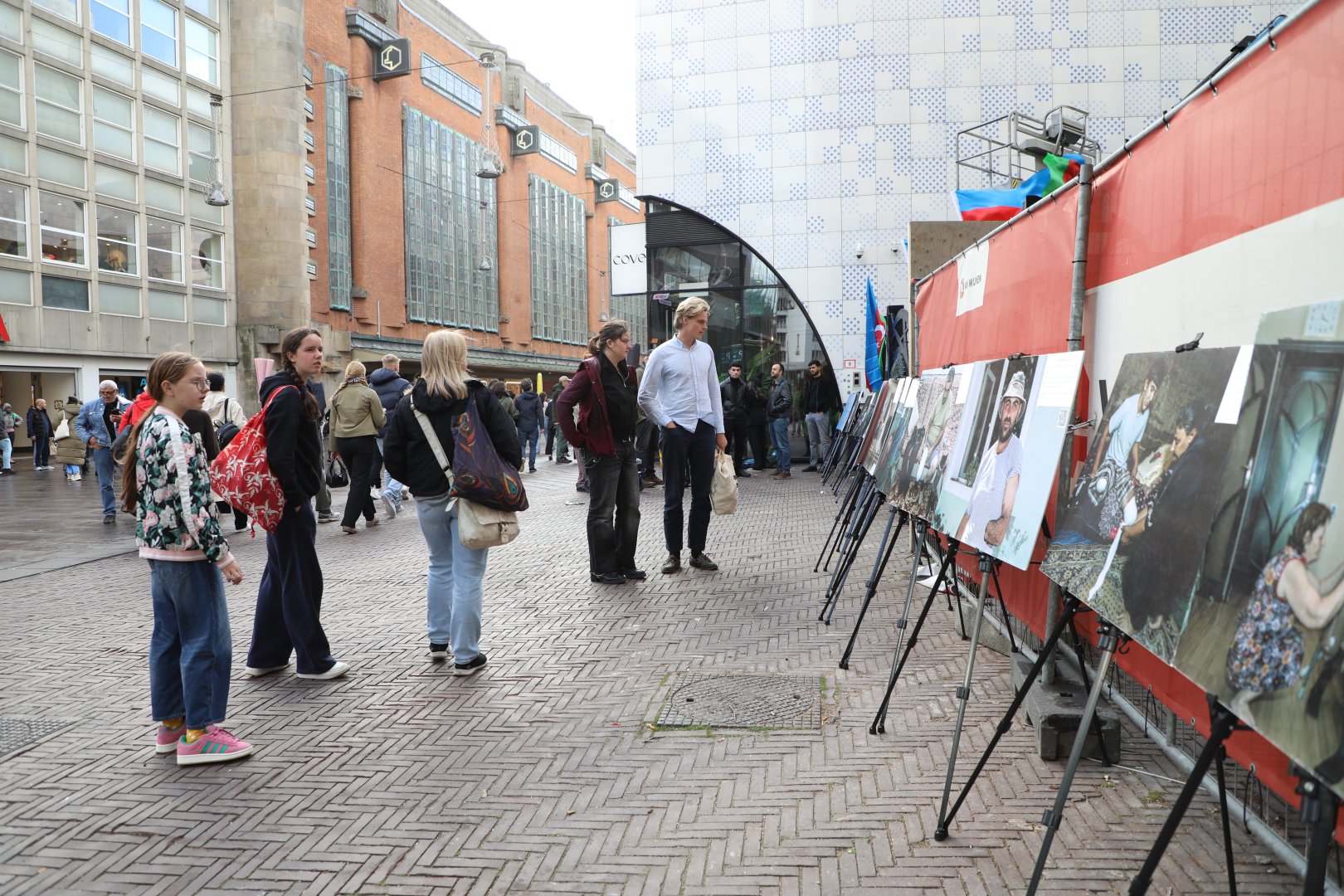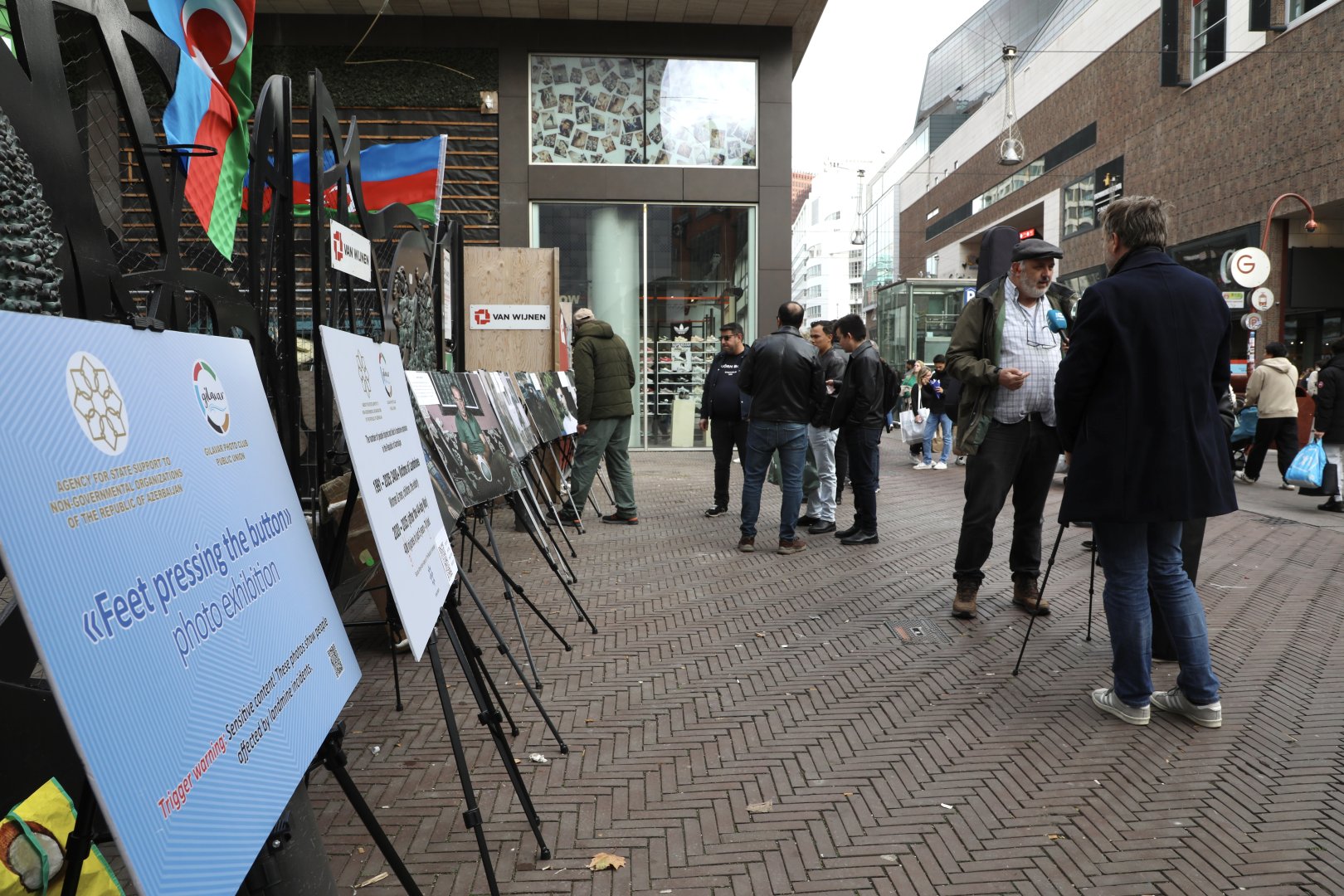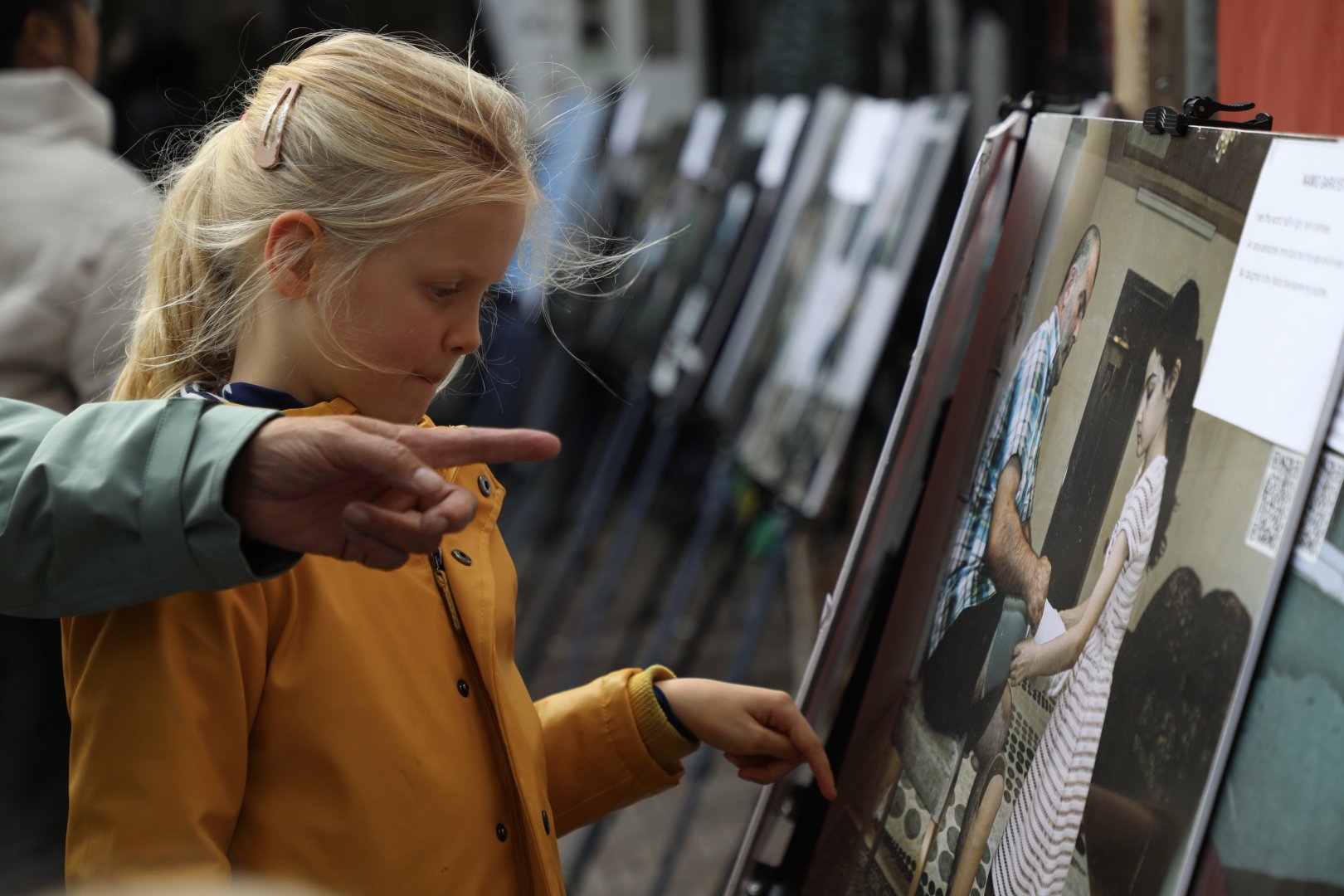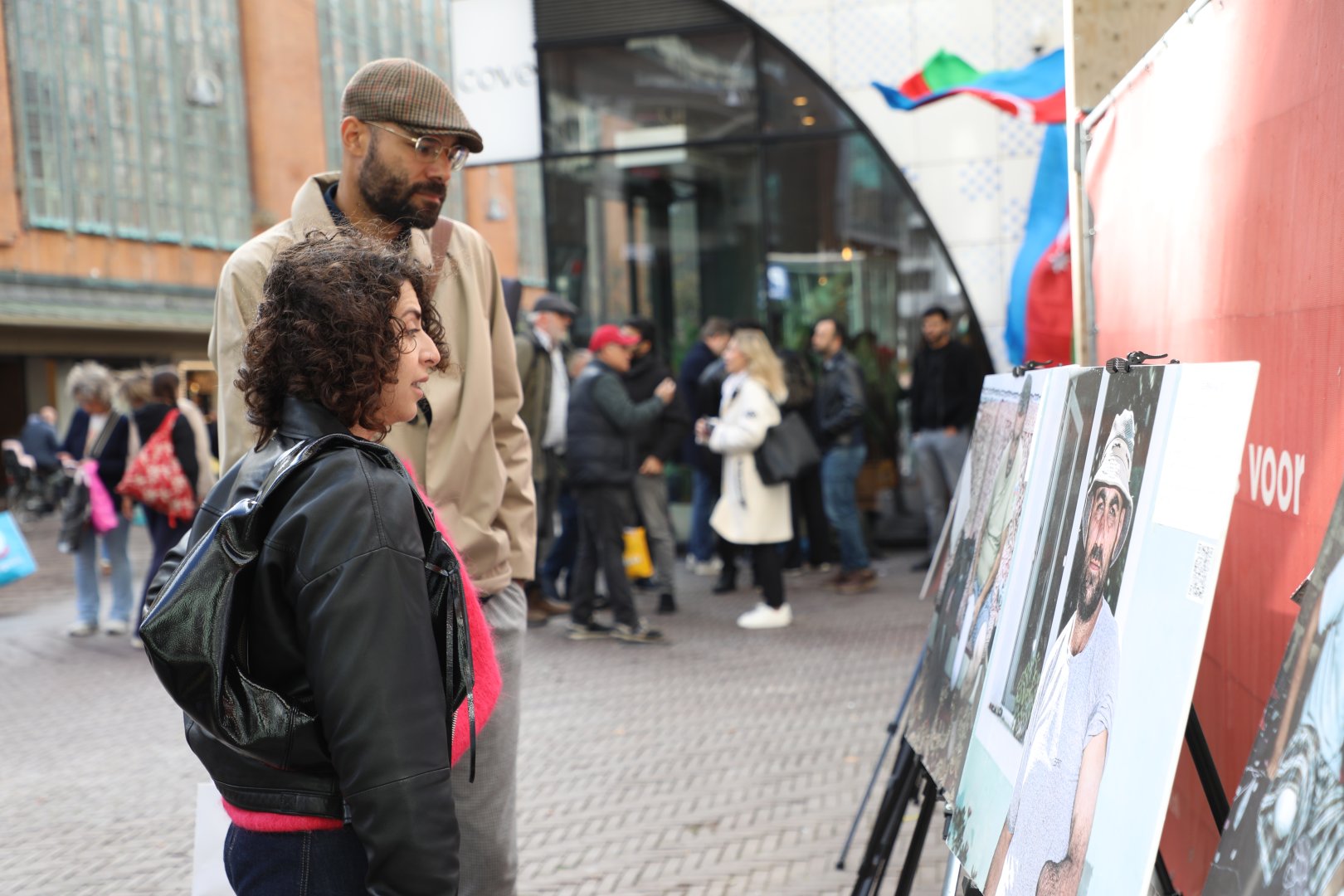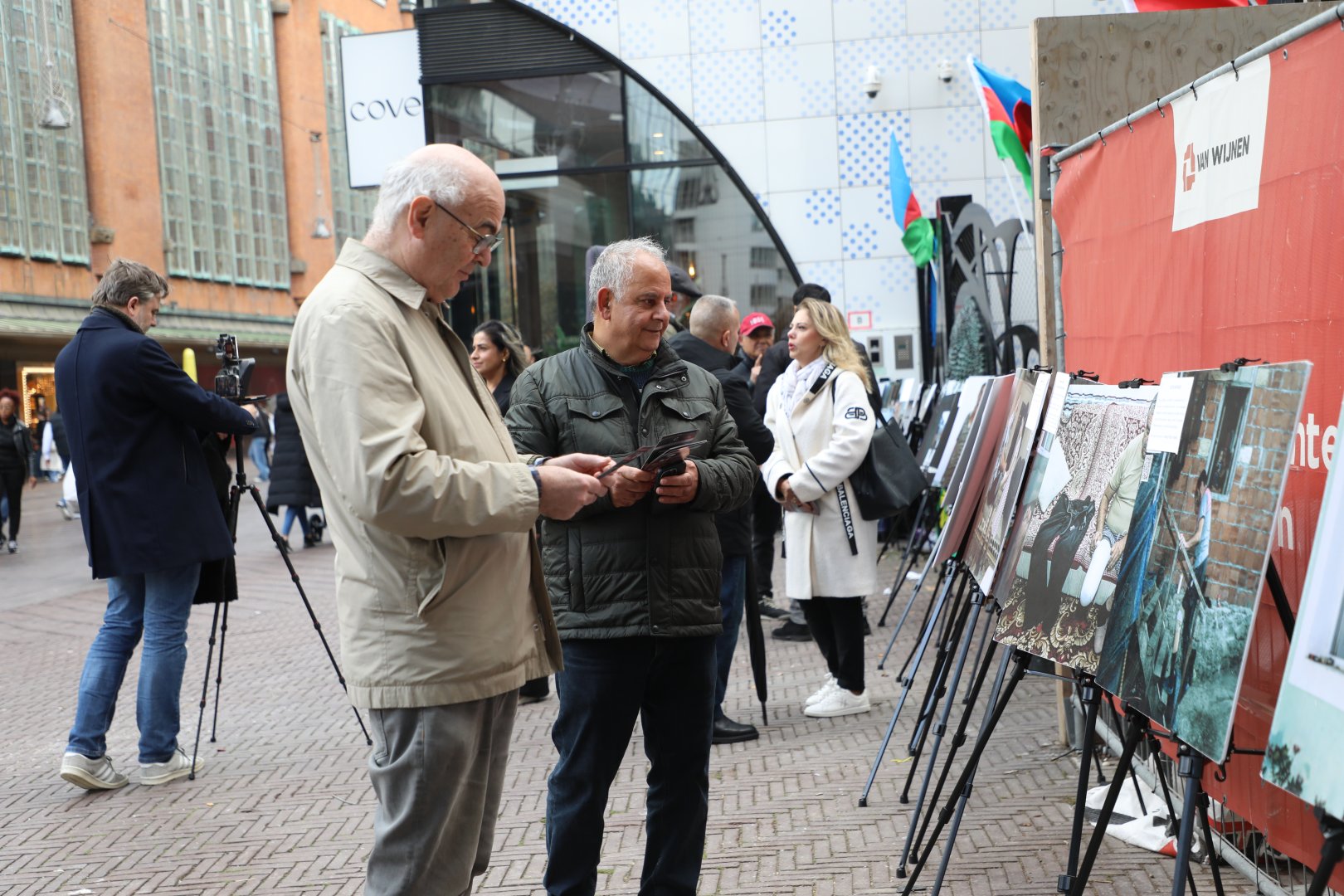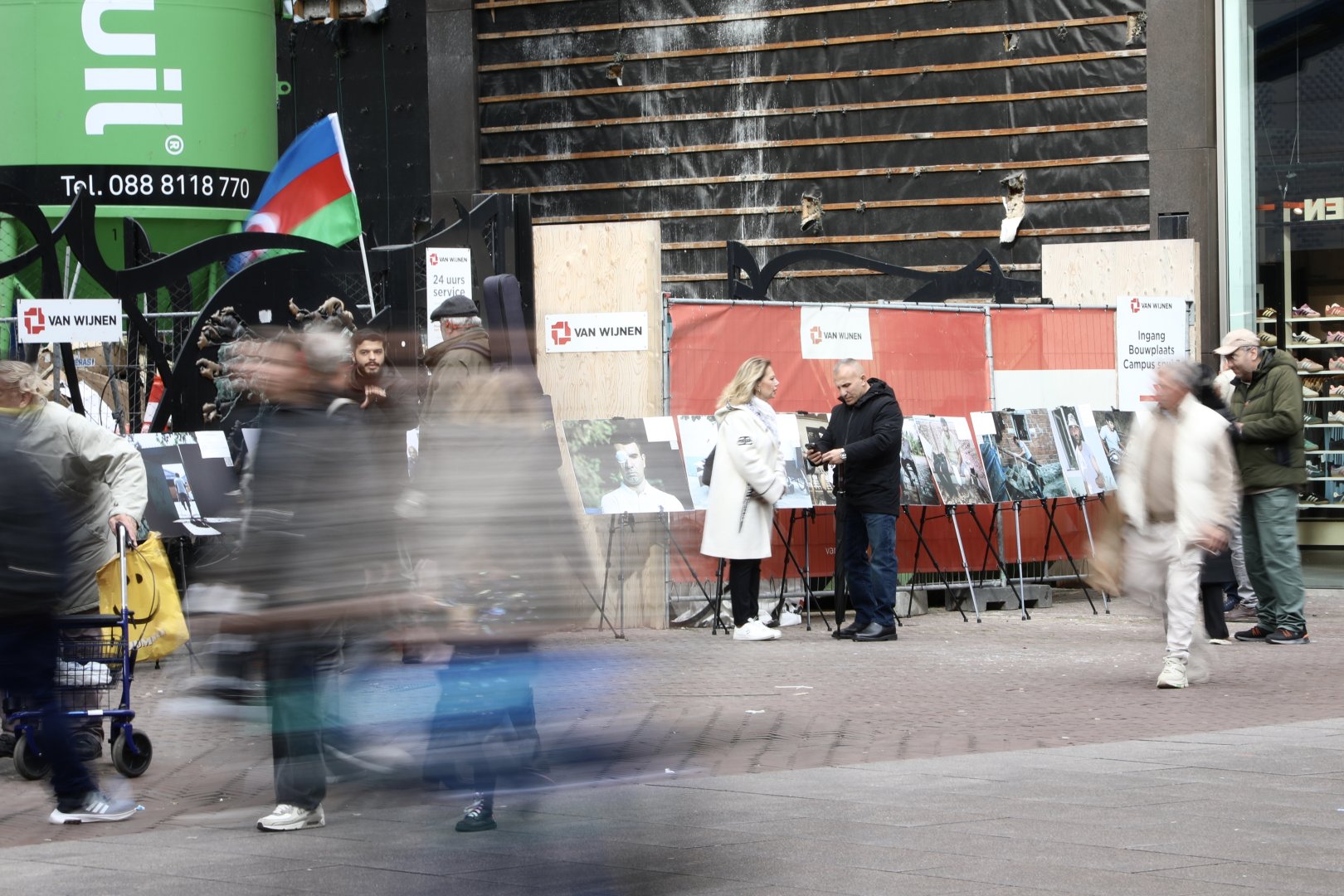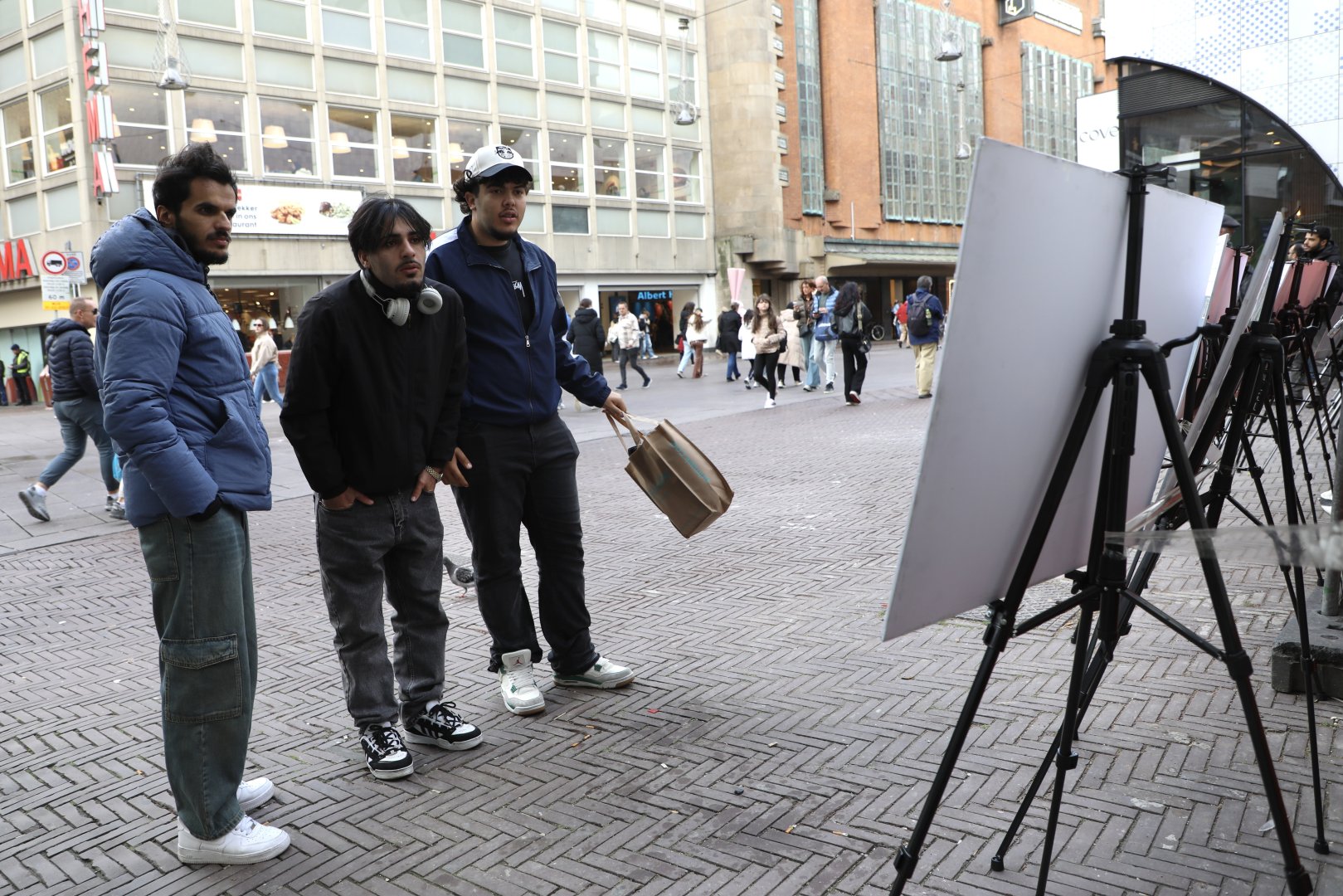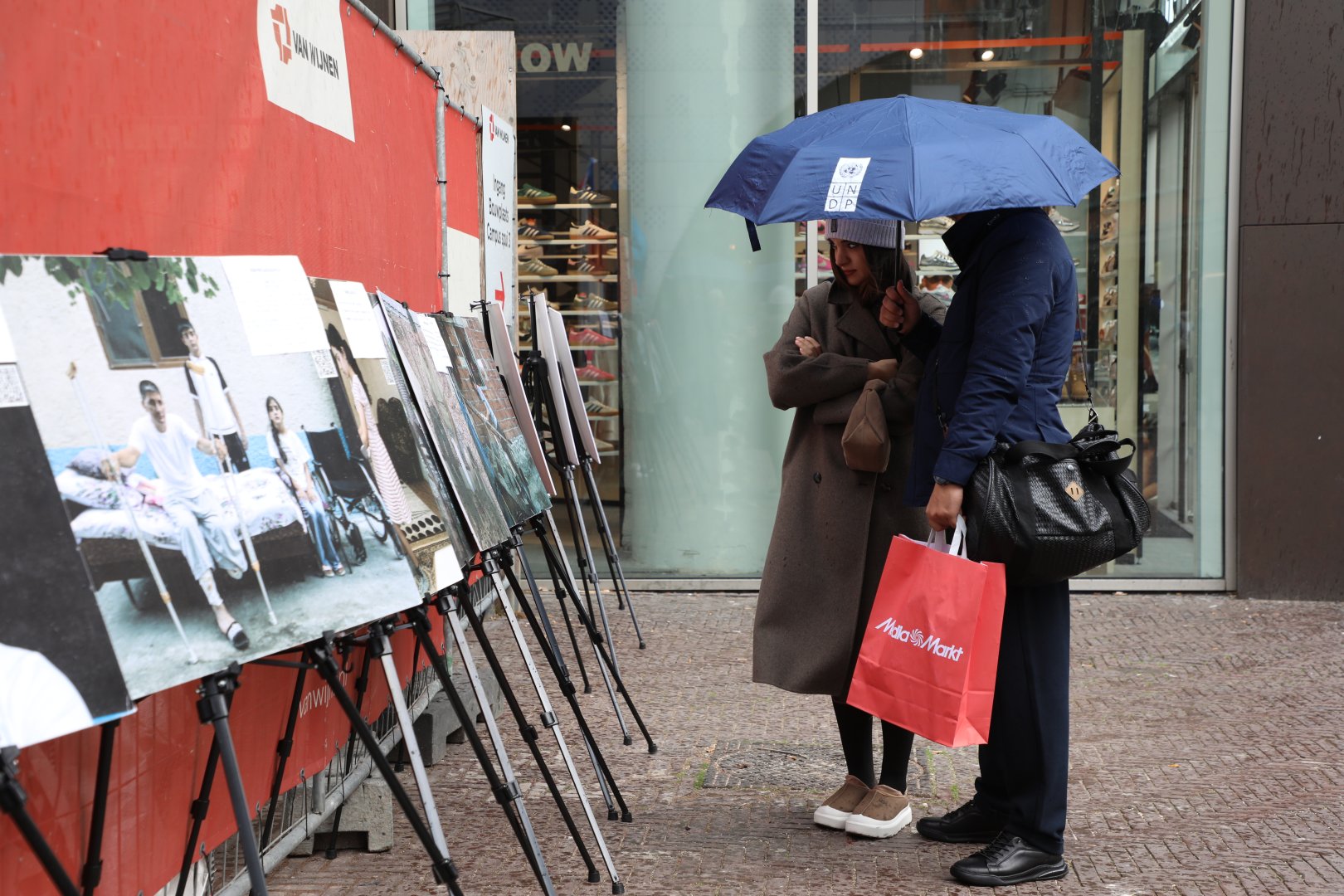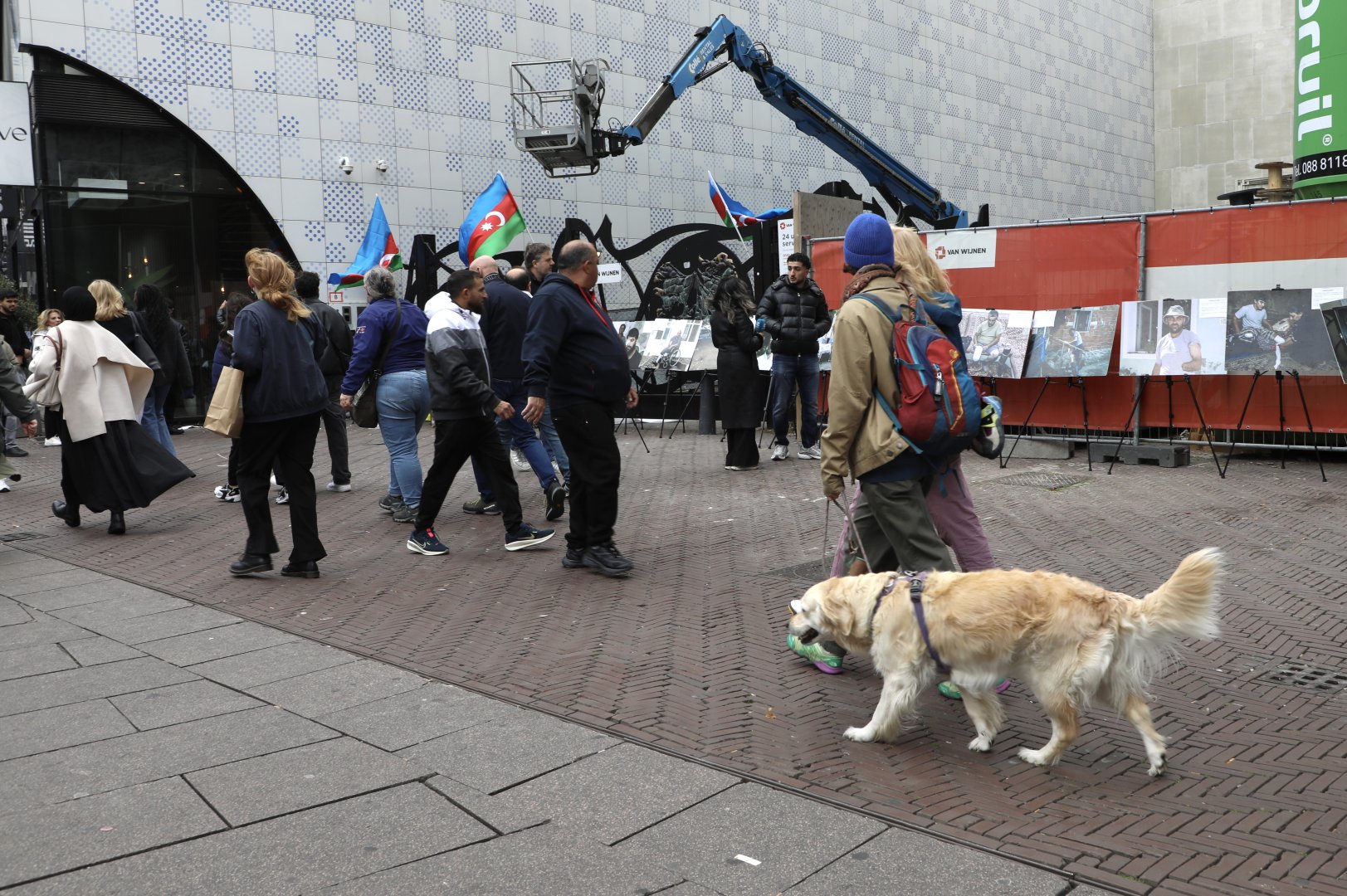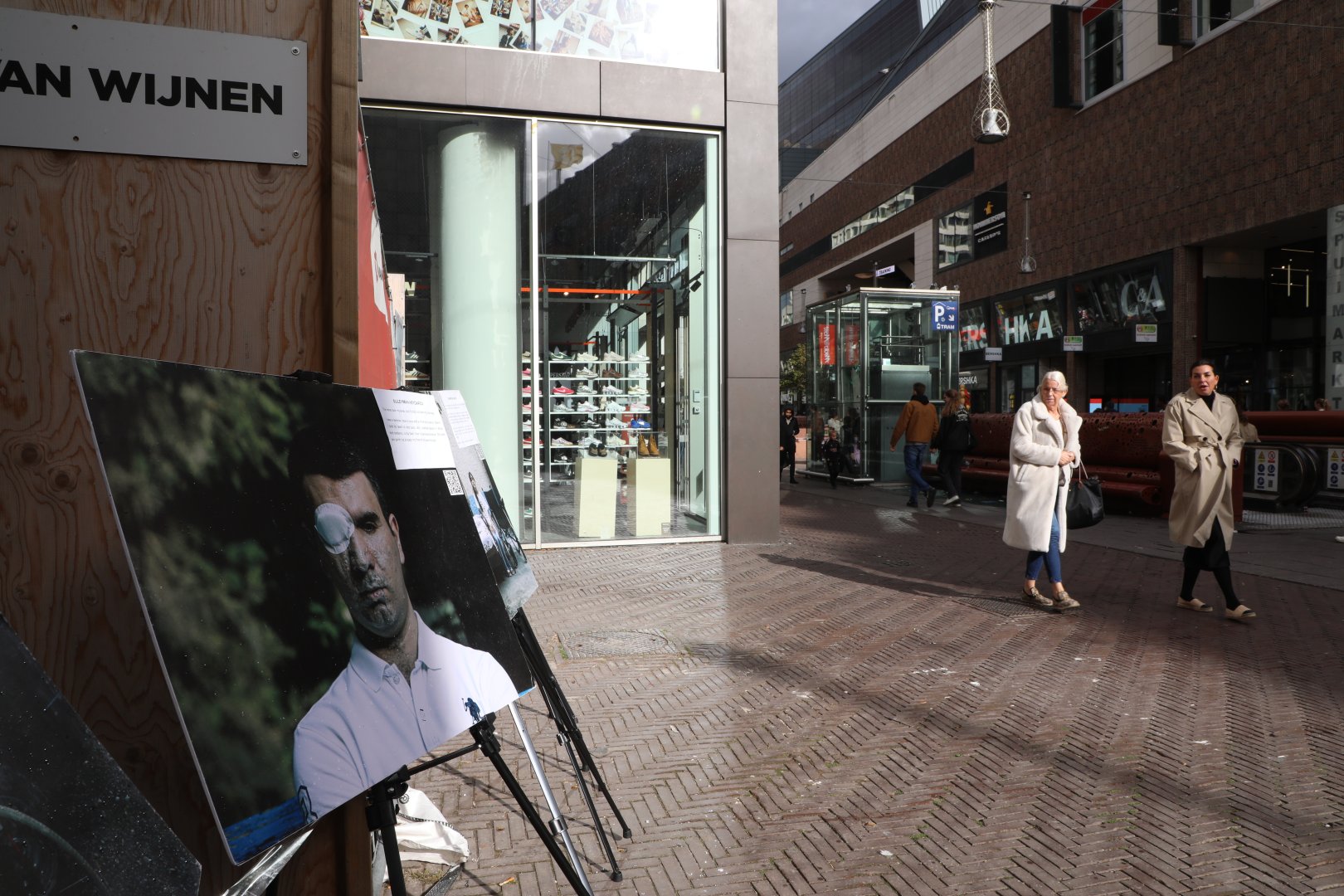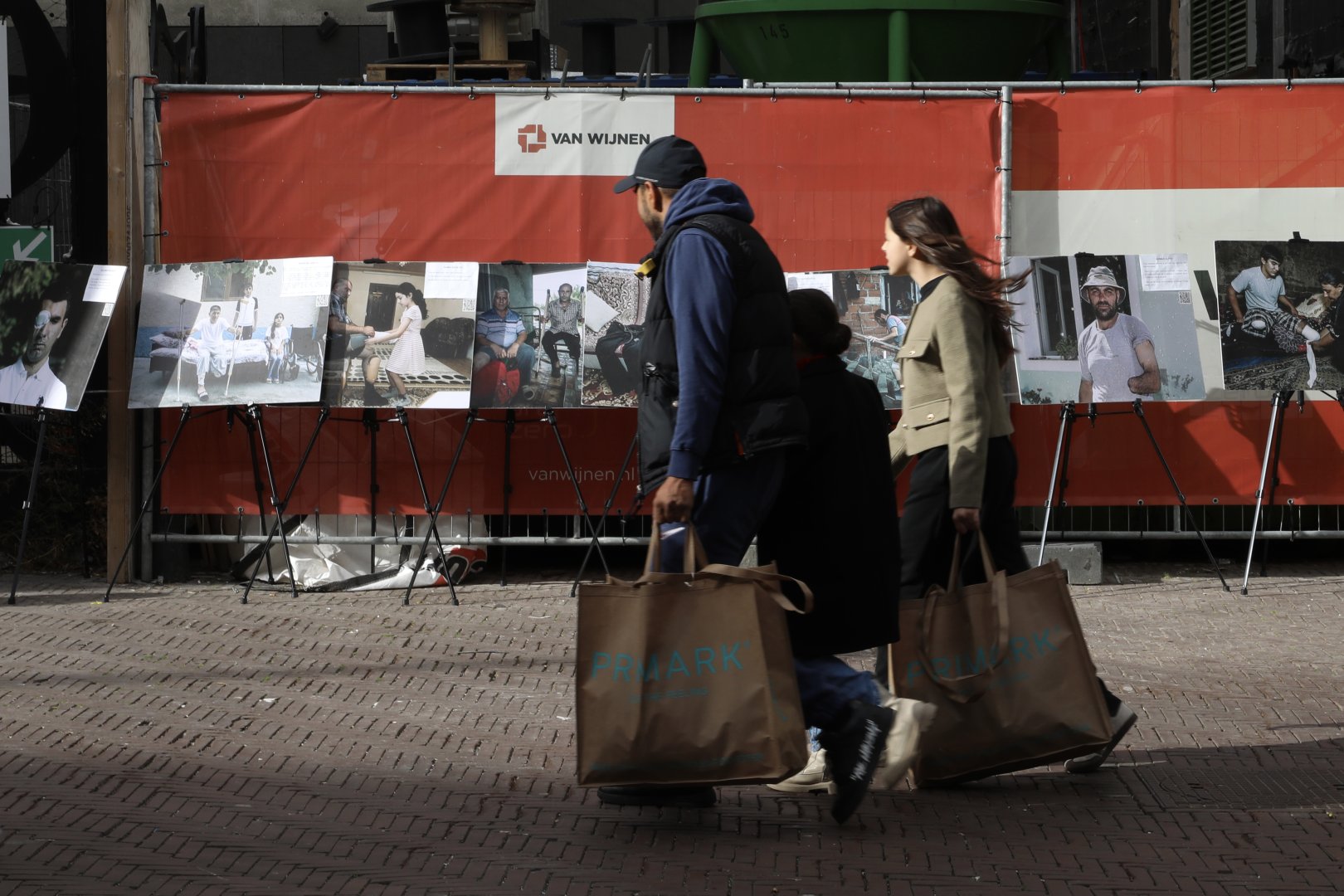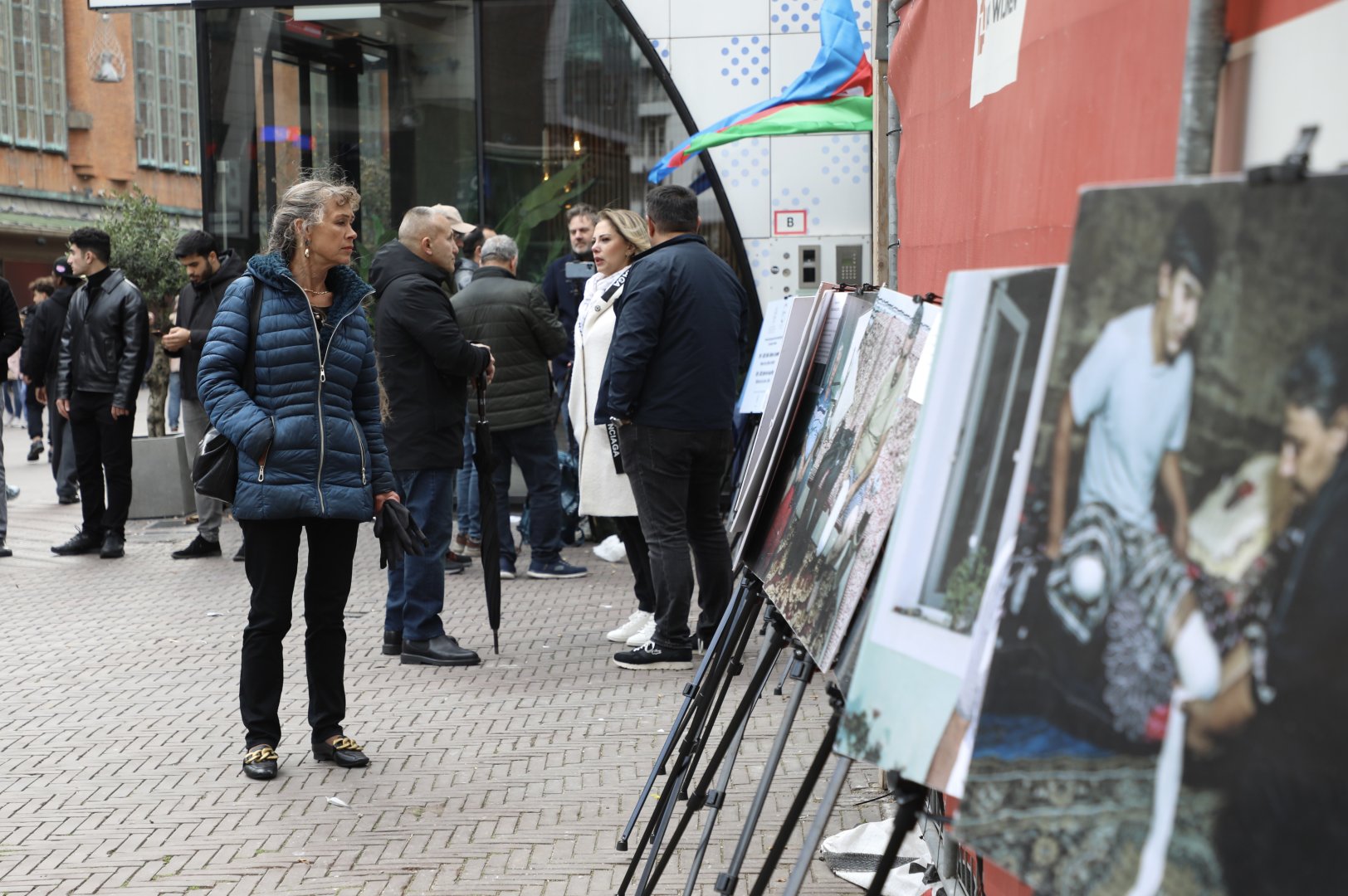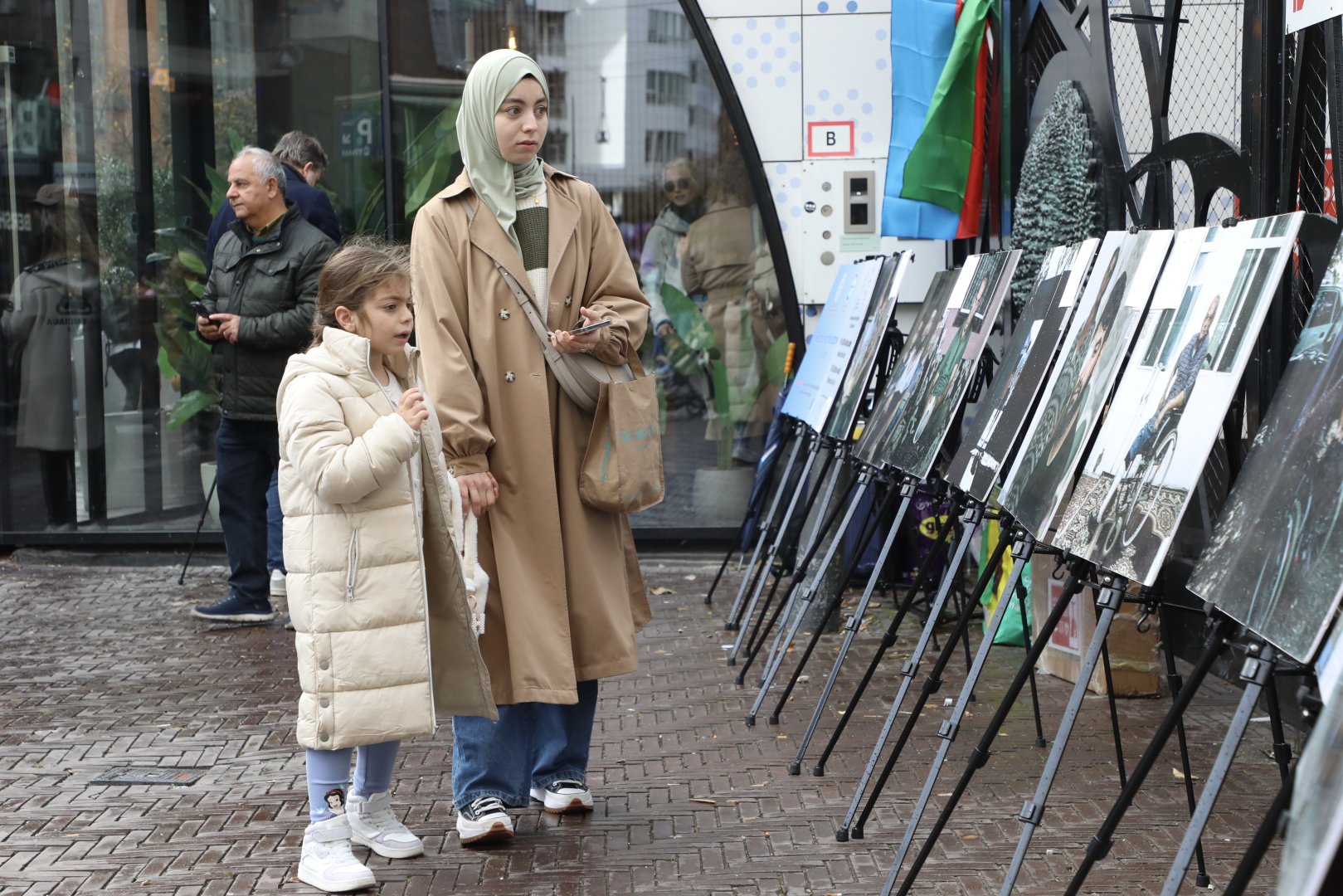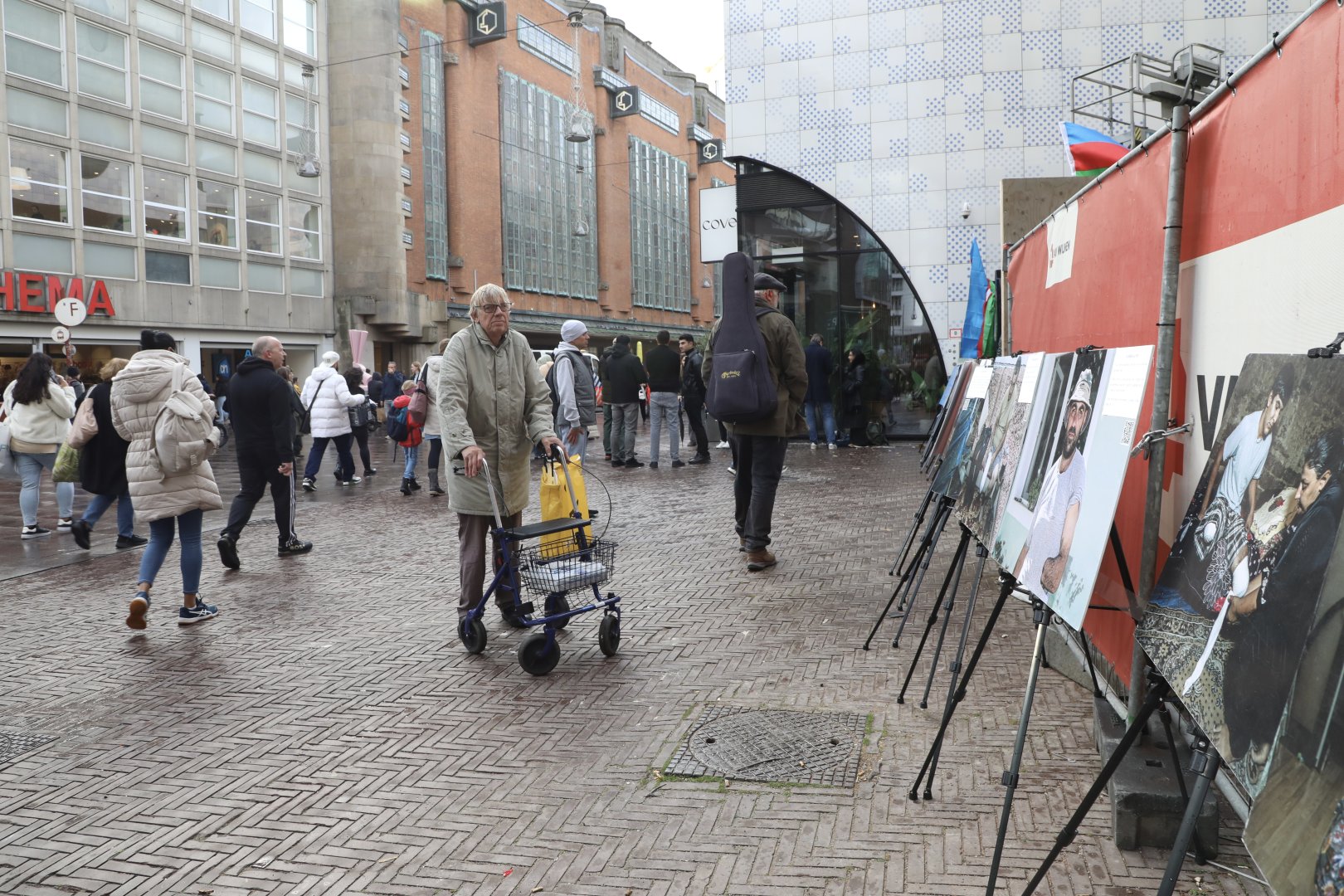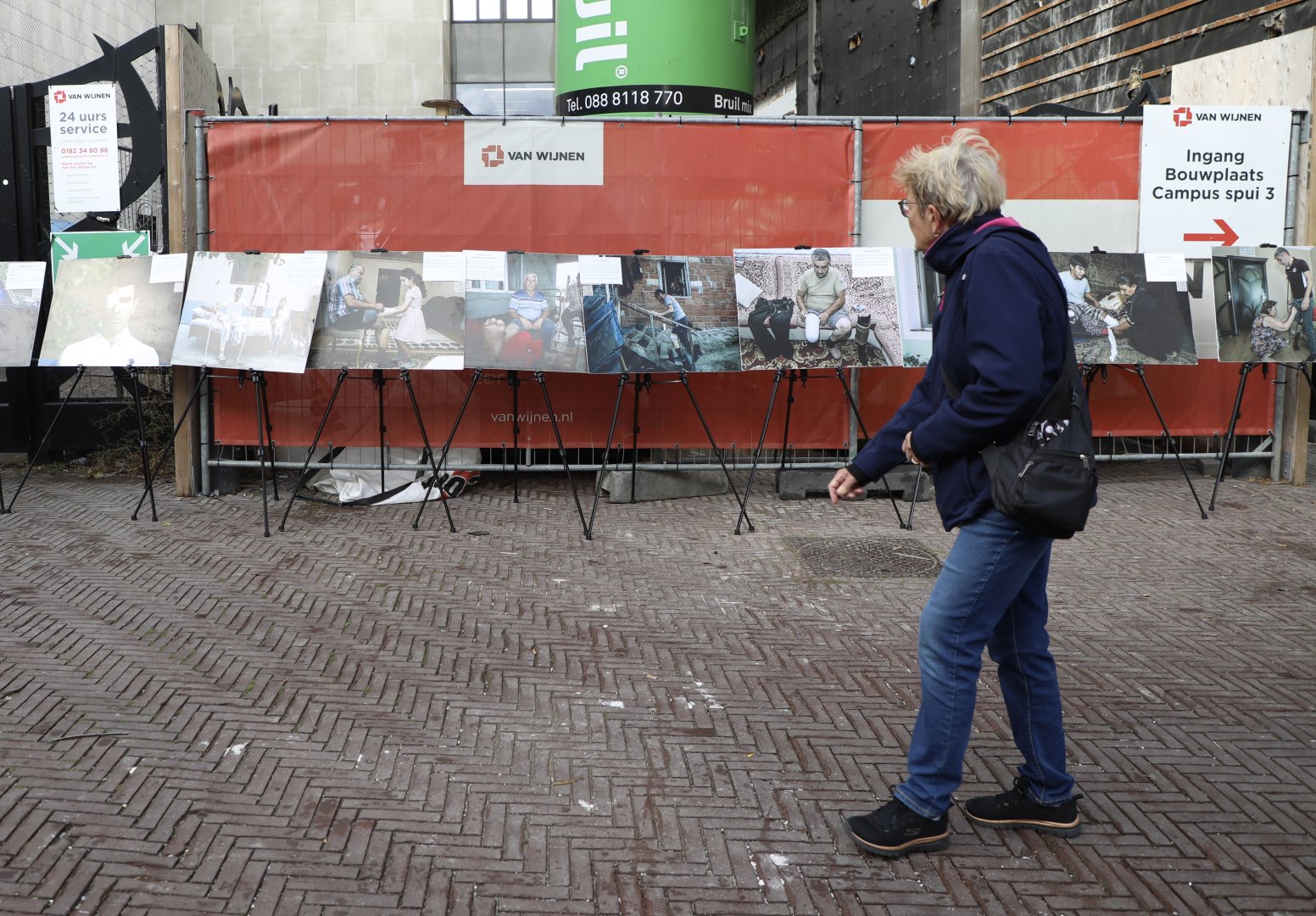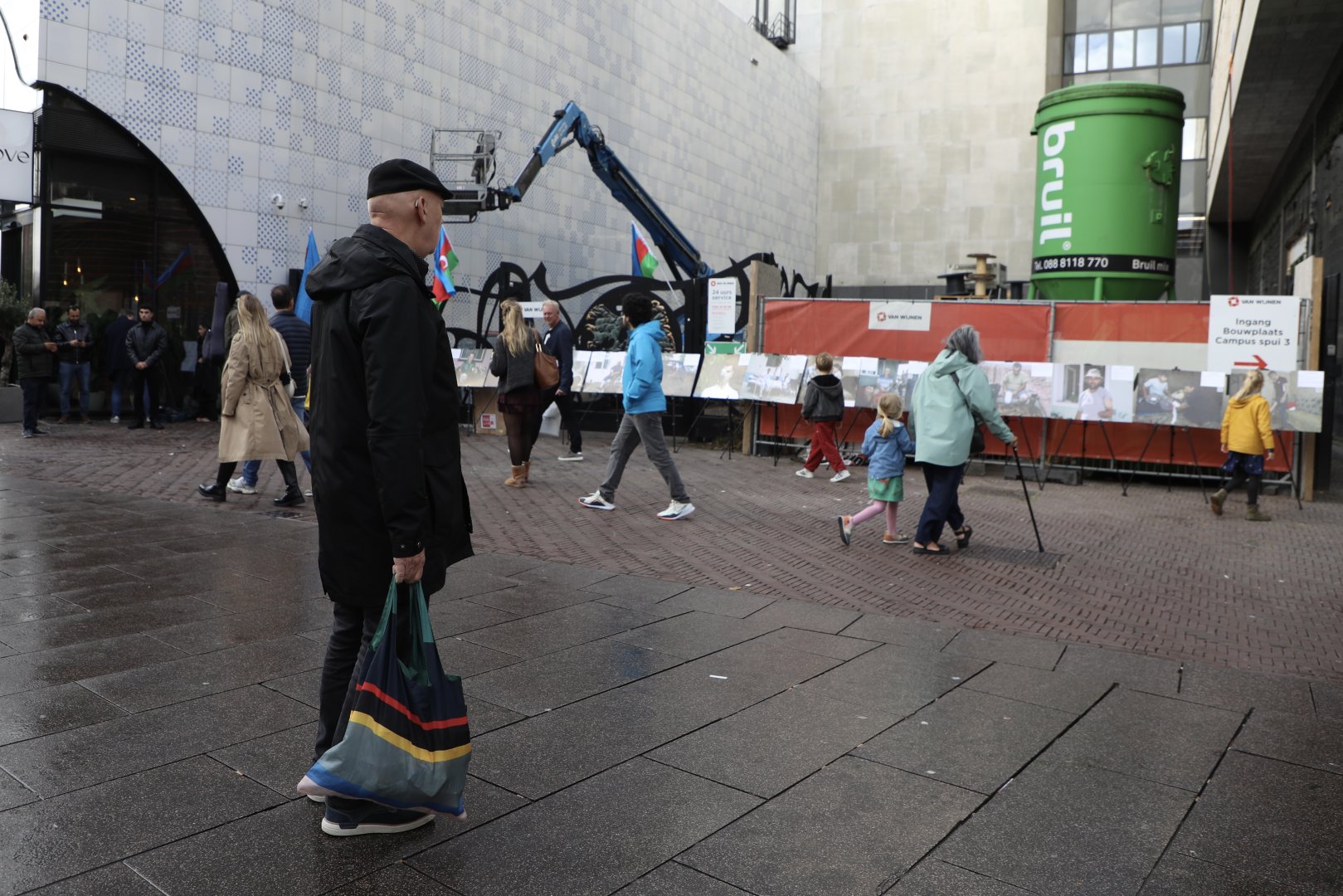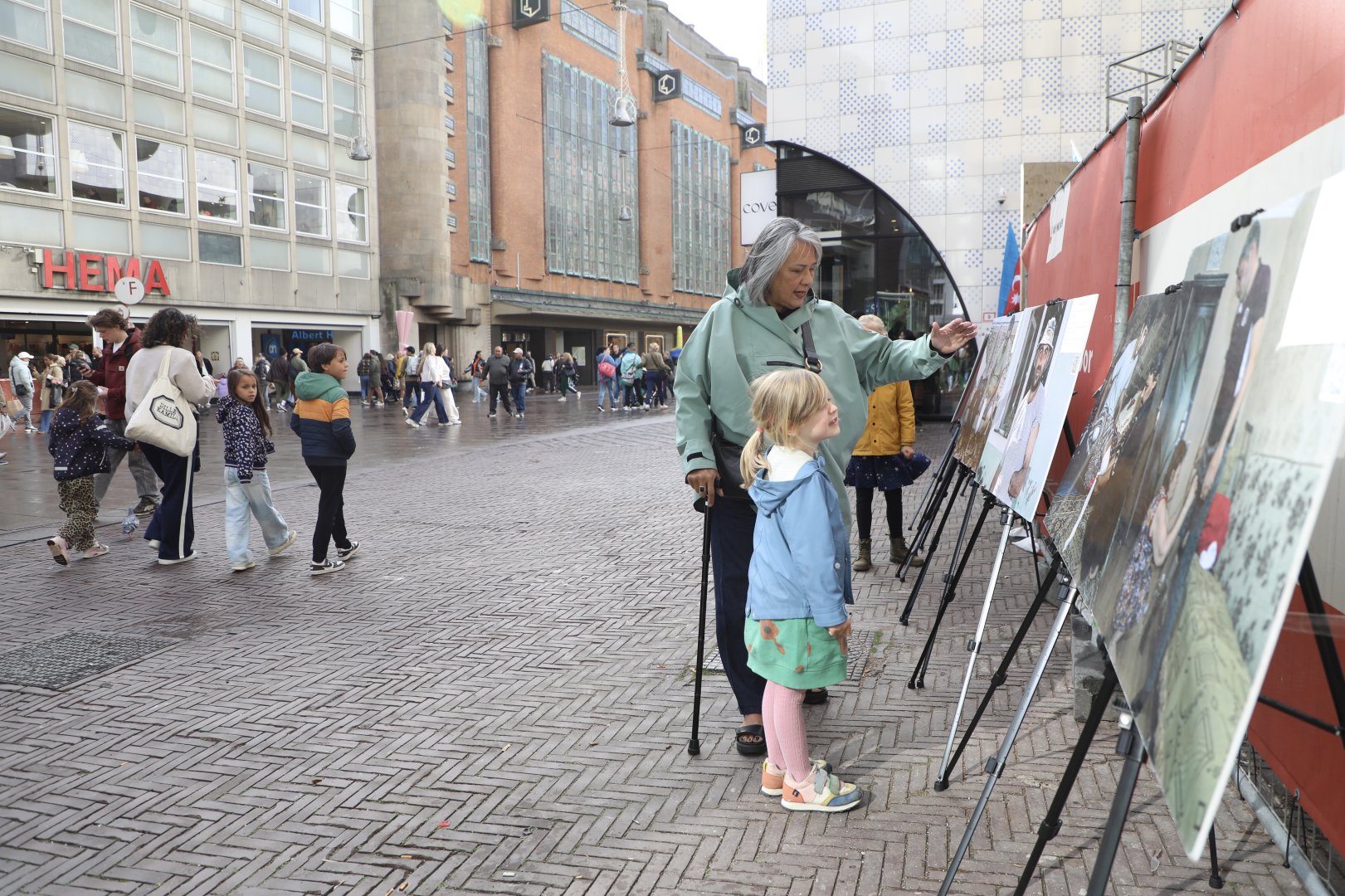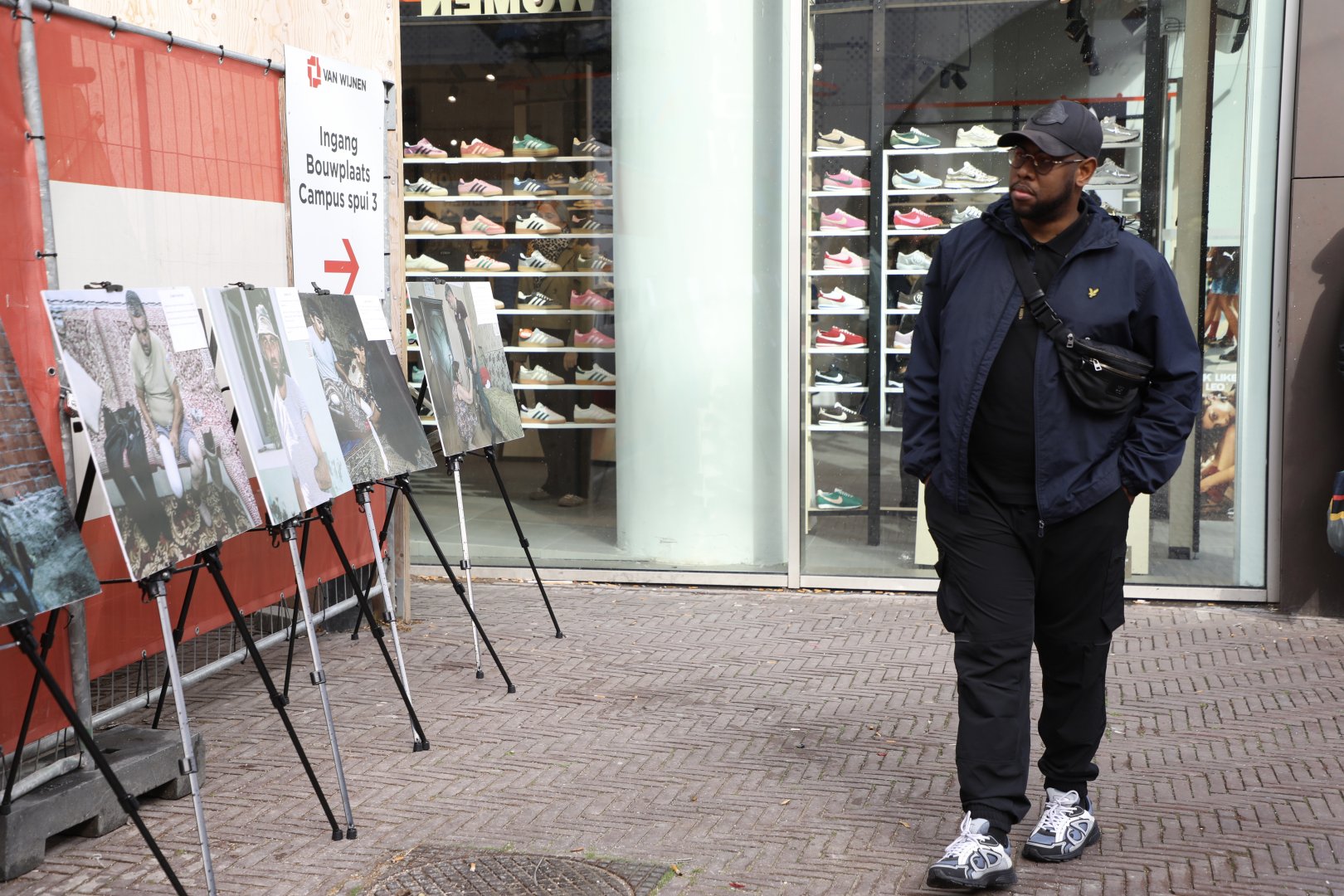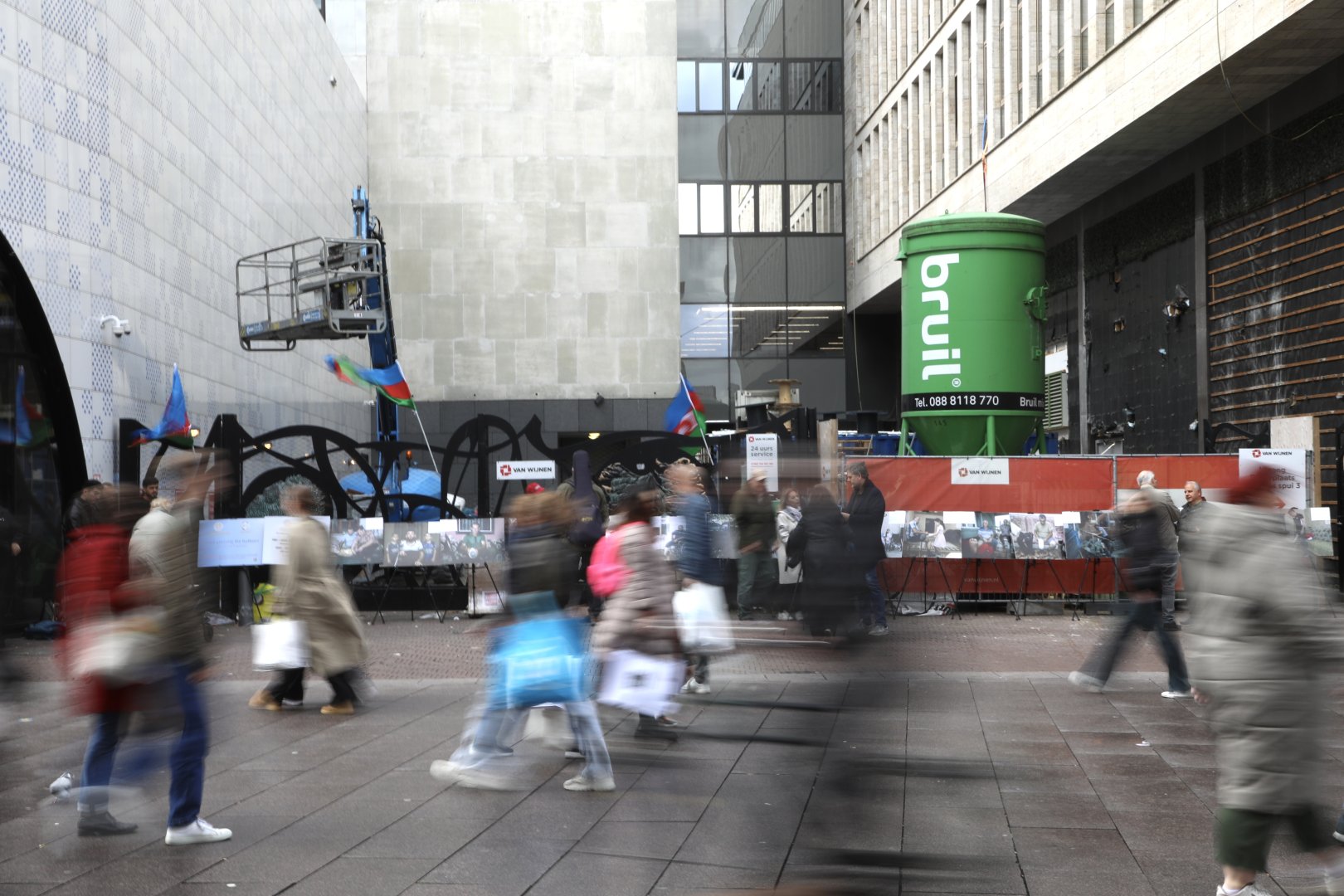BAKU, Azerbaijan, October 5. On October 4, a photo exhibition dedicated to Azerbaijan's mine victims was held in the central "Grote Marktstraat" street of The Hague, the capital of the Netherlands, Trend reports.
The exhibition was organized within the framework of the "European Photo Exhibitions of Mine Victims" project, implemented by the "Gilavar" Photo Club Public Union with the sponsorship of the State Support Agency for NGOs of the Republic of Azerbaijan. The local partner of the project in the Netherlands is the "Motherland" European Azerbaijani Women's Union.
Rashad Mehdiyev, Chairman of the "Gilavar" Photo Club Public Union, stated that The Hague is recognized worldwide as the "capital of international law," hosting the International Court of Justice, the International Criminal Court, and several important tribunals: "Therefore, after Germany, France, and Belgium, we are concluding our exhibition in this symbolic city. Over nine days, the crowded photo exhibitions we held in five European cities showcased the tragedies and scars caused by Armenia's mine war on the lives of peaceful, innocent people. Accurate mine maps for the Azerbaijani side have still not been provided. We desire a mine-free, peaceful South Caucasus and demand justice for mine victims. It is no coincidence that this exhibition took place on October 4—the anniversary of the day when peaceful civilians in Ganja came under rocket attacks from Armenia. The attack on Ganja was another attempt at the Khodjaly genocide. We concluded this exhibition by planting an olive tree—a symbol of security and peace—in the area of the Khodjaly monument in The Hague. This olive tree expresses our deepest respect for the cherished memory of those who lost their lives and were injured due to the explosions of mines planted by Armenia in Azerbaijani territories."
The photo exhibition reflected the painful stories, losses, and life wills of mine victims. Residents of The Hague read these words on the photo of mine victim Elchin Guliyev: "A mine makes no distinction between nation or profession. It only counts our steps. My profession was mine detection, and while searching with the desire to save lives, I lost my right leg in a mine explosion." Mine victim Elvin Gafarov addressed the residents of The Hague through his photo with these words: "I was a villager, neither a soldier nor an officer. While engaged in my daily chores, I stepped on a mine and lost my left leg. Although my life was very simple, the pains inflicted on me by the mine tragedy made it complex and unbearable."
After Munich, Nuremberg, Paris, and Brussels, this time The Hague listened to the voices of Azerbaijan's mine victims. With this, the "Gilavar" Photo Club has concluded the "European Photo Exhibitions of Mine Victims" project.

